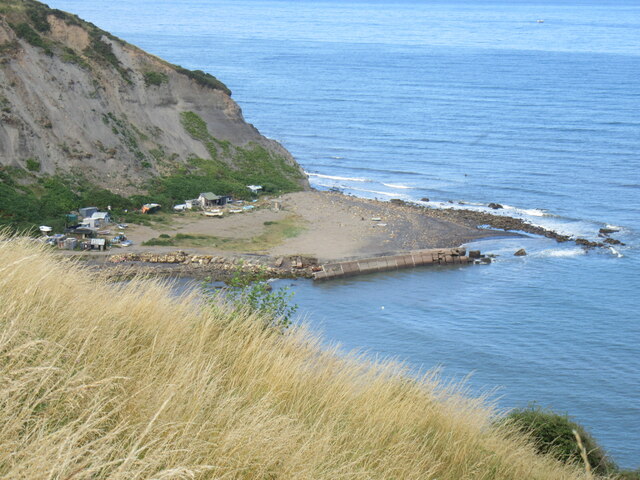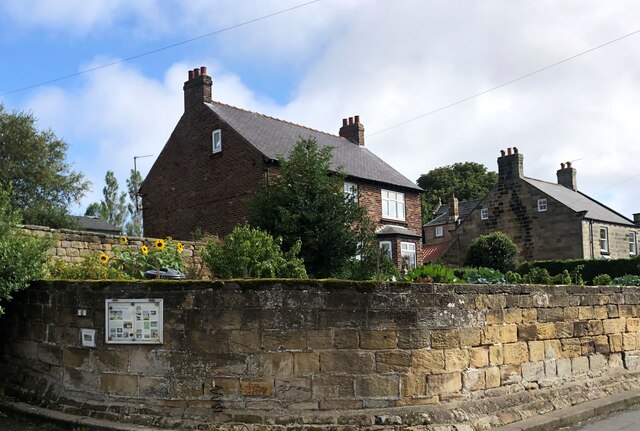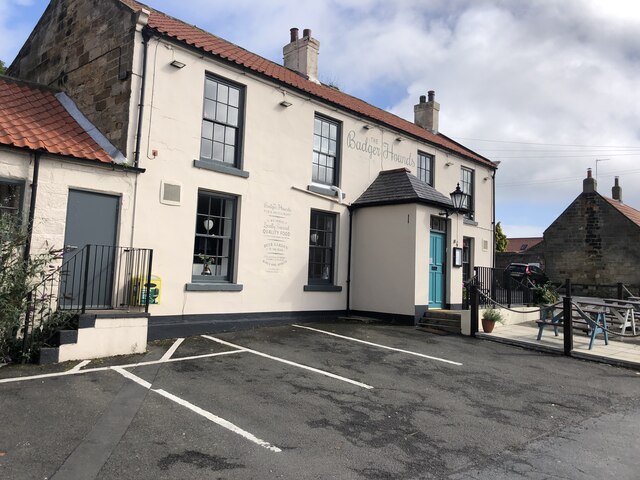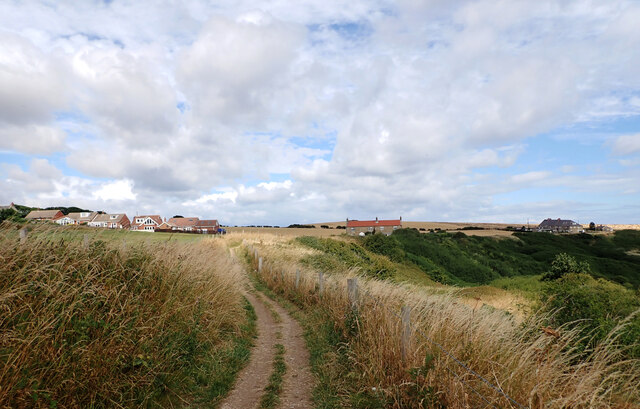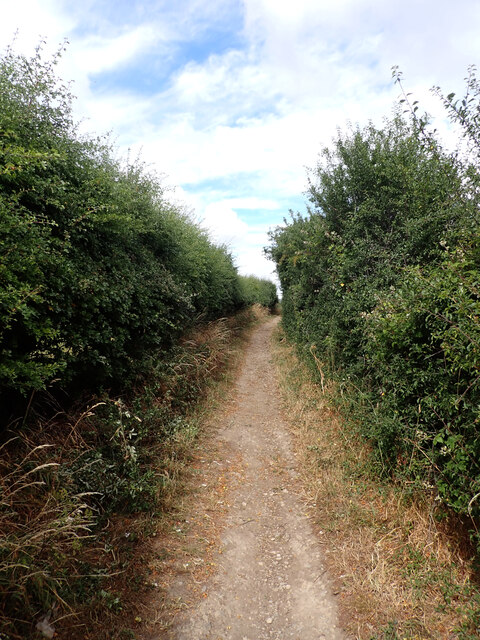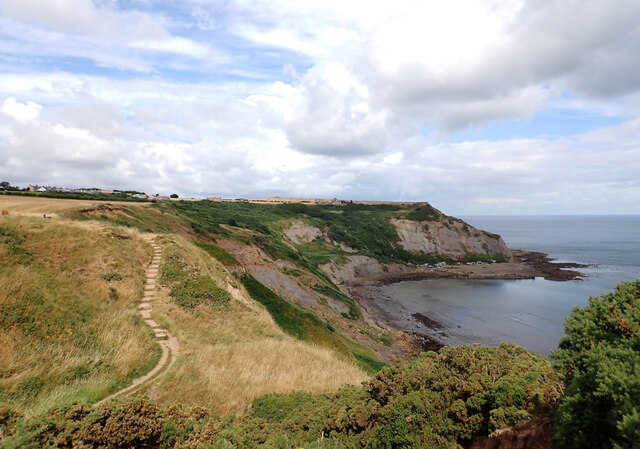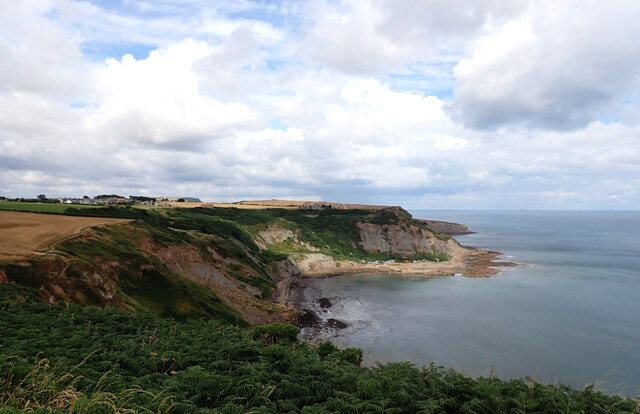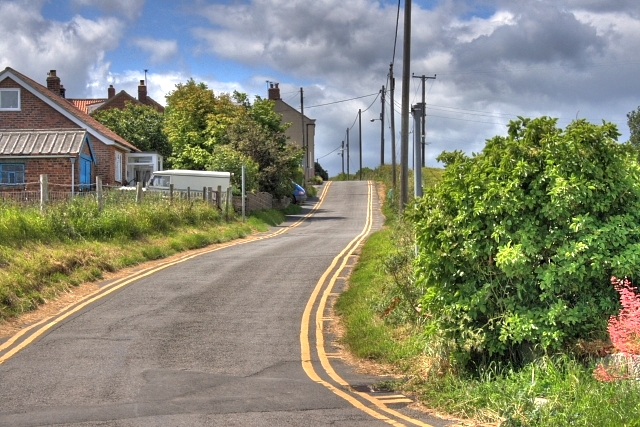Caldron Cliff
Cliff, Slope in Yorkshire Scarborough
England
Caldron Cliff
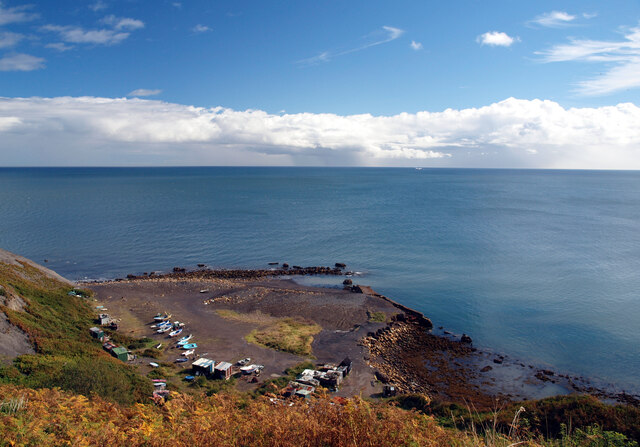
Caldron Cliff is a prominent geological formation located in Yorkshire, England. It is situated near the village of Caldron, in the North York Moors National Park. The cliff is a striking example of a steep slope that stretches for approximately 100 meters in length.
The formation is characterized by its distinctive jagged appearance, with layers of sedimentary rock exposed on its face. These layers provide a glimpse into the area's geological history, showcasing different periods of deposition and erosion. The cliff is primarily composed of sandstone and shale, giving it a unique color palette ranging from earthy browns to rusty reds.
Caldron Cliff is renowned for its natural beauty and dramatic vistas. Visitors can enjoy breathtaking views of the surrounding countryside from its vantage point. The cliff also serves as a popular destination for hikers and climbers, who are drawn to its challenging terrain and exhilarating vertical drops.
The area surrounding Caldron Cliff is rich in biodiversity, with several species of flora and fauna calling it home. The cliff provides nesting sites for various birds, including peregrine falcons and ravens. Rare plant species such as heather and bilberry can also be found in the vicinity, adding to the area's ecological significance.
Overall, Caldron Cliff is a remarkable geological feature that offers a captivating blend of natural beauty, geological history, and outdoor recreation. Its rugged charm and panoramic views make it a must-visit destination for nature enthusiasts and adventure seekers alike.
If you have any feedback on the listing, please let us know in the comments section below.
Caldron Cliff Images
Images are sourced within 2km of 54.535908/-0.74796164 or Grid Reference NZ8116. Thanks to Geograph Open Source API. All images are credited.

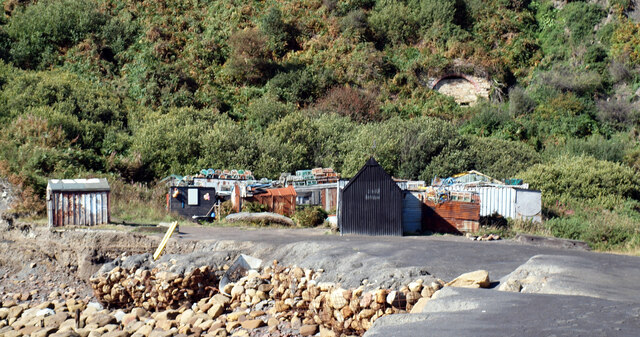
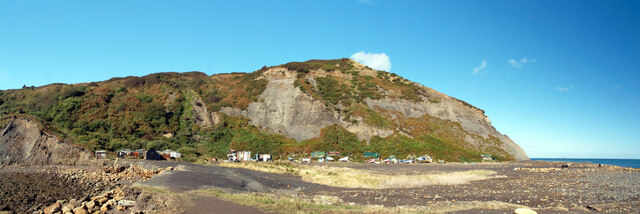
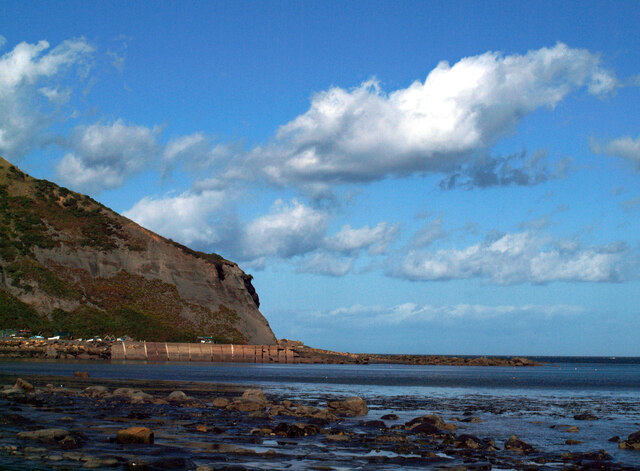

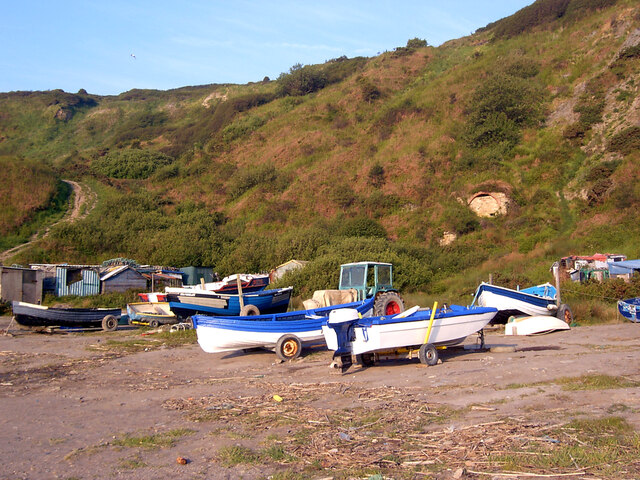
![Port Mulgrave This is Port Mulgrave, once an active harbour east of Staithes, where ironstone was exported to foundries on Tyneside.
There is still no easy way down to the harbour. Once there were steps used by the men to descend every day to work on the quays and gantries, the cranes and tips, and the ships. These steps have long disappeared, and a galvanised metal set of steps that replaced the makeshift path is currently closed due to a landslip. Prior to this there was another landslip in 2016 when I was involved with the National Trust in remedial work to clear the path; see <a title="https://www.geograph.org.uk/snippet/14435" href="https://www.geograph.org.uk/snippet/14435">Link</a>.
Half way along the beach is evidence of another recent landslip.
Port Mulgrave is home to a small community of fishermen, with their huts, boats and tractors. I have often wondered how they got their tractors on the beach. A report from 1995 perhaps provides a clue.
I did say 1995, a year when I was certainly familiar with the harbour, and the report made the national newspapers. But I have no recollection.
72-year-old Walter Walker lived in the village on the cliff top. He had moved from Leeds in the 1950s with the dream of becoming a salmon fisherman. In 1970, he began building is own boat in his back garden, a 20-foot, 17-ton catamaran, named &#039;Stealaway&#039;.
In 1995, his boat was completed but a couple of obstacles stood between him and the sea. Firstly, his garden was only accessible through a cornfield as it had been cut off from the track that led down to the harbour by a development.
The second minor obstacle was the 300-foot cliff face.
The farmer of the field refused permission but Walker moved his boat anyway, dragging it the 400 yards through the cornfield at a rate of 60 yards a day. The farmer just happened to be on holiday at the time. Solicitors&#039; letters followed but Walker thought &quot;What the hell&quot;.
The move was the talk of the village; there was a turn out of 200 onlookers, and a local councillor served drinks.
In order to lower his boat down the cliff, Walker &quot;dug a trench right down the face&quot;. This incurred the wrath of English Nature as it is a Site of Special Scientific Interest because of its layers of rock and fossils. It is &quot;regarded as the standard textbook example of a particular chapter in geological time, the layers date back 180 million years. The site is one of the few where Whitby jet can be seen at the surface.&quot;
I wonder if there is any connection between Mr. Walker&#039;s trench and the recent landslips.
Taken from my daily blog <span class="nowrap"><a title="http://www.fhithich.uk/?p=27045" rel="nofollow ugc noopener" href="http://www.fhithich.uk/?p=27045">Link</a><img style="margin-left:2px;" alt="External link" title="External link - shift click to open in new window" src="https://s1.geograph.org.uk/img/external.png" width="10" height="10"/></span>.
Sources:
&#039;Fisherman&#039;s voyage round the corn&#039; (1995) Daily Mail, 11 Jul, 21, available: <span class="nowrap"><a title="https://link-gale-com.ezproxy.is.ed.ac.uk/apps/doc/EE1860958166/GDCS?u=ed_itw&amp;sid=bookmark-GDCS&amp;xid=7c83ff3b" rel="nofollow ugc noopener" href="https://link-gale-com.ezproxy.is.ed.ac.uk/apps/doc/EE1860958166/GDCS?u=ed_itw&amp;sid=bookmark-GDCS&amp;xid=7c83ff3b">Link</a><img style="margin-left:2px;" alt="External link" title="External link - shift click to open in new window" src="https://s1.geograph.org.uk/img/external.png" width="10" height="10"/></span> [accessed 19 Dec 2021].
&#039;Old man&#039;s short cut to the sea mars geology site&#039; (1995) Times, 07 Sep, 5, available: <span class="nowrap"><a title="https://link-gale-com.ezproxy.is.ed.ac.uk/apps/doc/IF0503412648/GDCS?u=ed_itw&amp;sid=bookmark-GDCS&amp;xid=2893a381" rel="nofollow ugc noopener" href="https://link-gale-com.ezproxy.is.ed.ac.uk/apps/doc/IF0503412648/GDCS?u=ed_itw&amp;sid=bookmark-GDCS&amp;xid=2893a381">Link</a><img style="margin-left:2px;" alt="External link" title="External link - shift click to open in new window" src="https://s1.geograph.org.uk/img/external.png" width="10" height="10"/></span> [accessed 19 Dec 2021].](https://s3.geograph.org.uk/geophotos/07/04/85/7048539_3912d4ae.jpg)
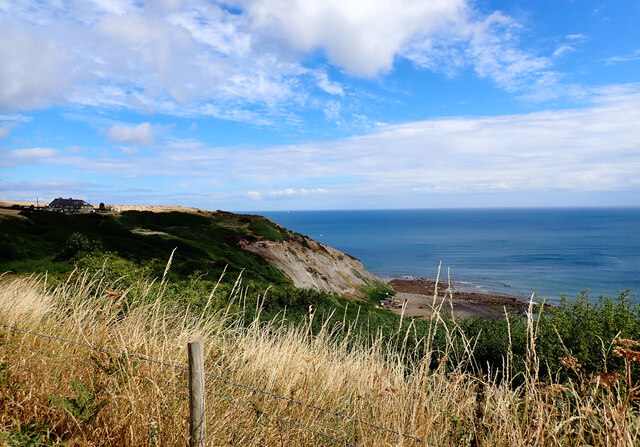
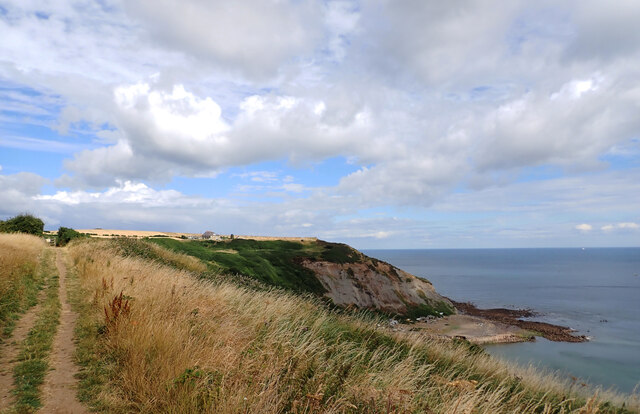
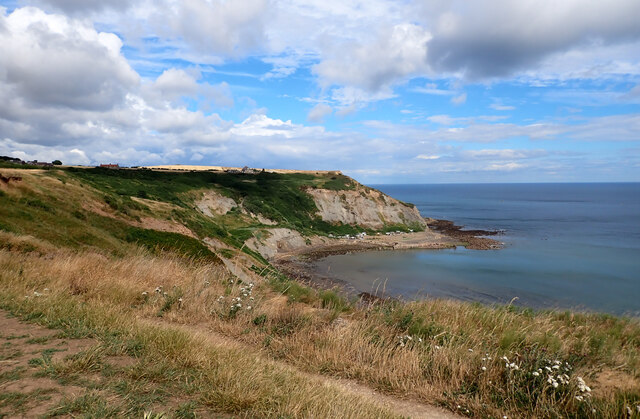
Caldron Cliff is located at Grid Ref: NZ8116 (Lat: 54.535908, Lng: -0.74796164)
Division: North Riding
Administrative County: North Yorkshire
District: Scarborough
Police Authority: North Yorkshire
What 3 Words
///fluid.lies.thickens. Near Loftus, North Yorkshire
Nearby Locations
Related Wikis
Runswick Bay Lifeboat Station
Runswick Bay Lifeboat Station was a Royal National Lifeboat Institution (RNLI) lifeboat station located in Runswick Bay in North Yorkshire, England. The...
Runswick Bay
Runswick Bay is a bay in the Scarborough Borough of North Yorkshire, England. It is also the name of a village located on the western edge of the bay...
Hob Holes
The Hob Holes are caves in the cliffs of Runswick Bay, Scarborough, England which resulted from mining for jet – fossilised wood which is valuable as a...
Hinderwell railway station
Hinderwell railway station was a railway station on the Whitby Redcar and Middlesbrough Union Railway. It was opened on 3 December 1883, and served the...
Hinderwell
Hinderwell is a village and civil parish in the Scarborough district of North Yorkshire, England which lies within the North York Moors National Park,...
Port Mulgrave, North Yorkshire
Port Mulgrave is a derelict former ironstone exporting port on the North Yorkshire coast midway between Staithes and Runswick Bay in the civil parish of...
Ellerby, North Yorkshire
Ellerby is a village and civil parish in the Scarborough district of North Yorkshire, England, located within the North York Moors National Park. According...
Kettleness
Kettleness, is a hamlet in the Scarborough District of North Yorkshire, England. The settlement only consists of half-a-dozen houses, but up until the...
Nearby Amenities
Located within 500m of 54.535908,-0.74796164Have you been to Caldron Cliff?
Leave your review of Caldron Cliff below (or comments, questions and feedback).
